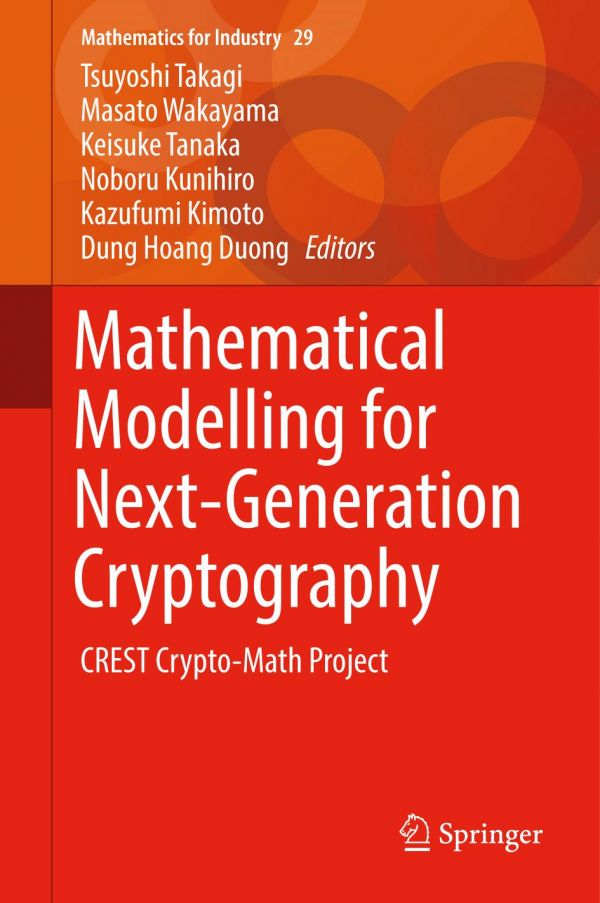Product desciption
Mathematical Modelling For Nextgeneration Cryptography Crest Cryptomath Project Tsuyoshi Takagi by Tsuyoshi Takagi, Masato Wakayama, Keisuke Tanaka, Noboru Kunihiro, Kazufumi Kimoto, Dung Hoang Duong 9789811050640, 9789811050657, 9811050643, 9811050651 instant download after payment.
This book presents the mathematical background underlying security modeling in the context of next-generation cryptography. By introducing new mathematical results in order to strengthen information security, while simultaneously presenting fresh insights and developing the respective areas of mathematics, it is the first-ever book to focus on areas that have not yet been fully exploited for cryptographic applications such as representation theory and mathematical physics, among others. Recent advances in cryptanalysis, brought about in particular by quantum computation and physical attacks on cryptographic devices, such as side-channel analysis or power analysis, have revealed the growing security risks for state-of-the-art cryptographic schemes. To address these risks, high-performance, next-generation cryptosystems must be studied, which requires the further development of the mathematical background of modern cryptography. More specifically, in order to avoid the security risks posed by adversaries with advanced attack capabilities, cryptosystems must be upgraded, which in turn relies on a wide range of mathematical theories. This book is suitable for use in an advanced graduate course in mathematical cryptography, while also offering a valuable reference guide for experts.
Abstract: This book presents the mathematical background underlying security modeling in the context of next-generation cryptography. By introducing new mathematical results in order to strengthen information security, while simultaneously presenting fresh insights and developing the respective areas of mathematics, it is the first-ever book to focus on areas that have not yet been fully exploited for cryptographic applications such as representation theory and mathematical physics, among others. Recent advances in cryptanalysis, brought about in particular by quantum computation and physical attacks on cryptographic devices, such as side-channel analysis or power analysis, have revealed the growing security risks for state-of-the-art cryptographic schemes. To address these risks, high-performance, next-generation cryptosystems must be studied, which requires the further development of the mathematical background of modern cryptography. More specifically, in order to avoid the security risks posed by adversaries with advanced attack capabilities, cryptosystems must be upgraded, which in turn relies on a wide range of mathematical theories. This book is suitable for use in an advanced graduate course in mathematical cryptography, while also offering a valuable reference guide for experts


